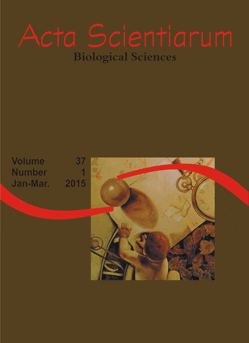<b>Biological spectrum and dispersal syndromes in an area of the semi-arid region of north-eastern Brazil
Abstract
The biological spectrum and diaspores dispersal syndromes of the species recorded in a stretch of vegetation in a semi-arid region within the Cariri Environment Protection Area, Boa Vista, Paraíba State (northeast) Brazil, are described. Collections were made from fertile specimens, preferentially bearing fruit, over a 15-month period. Life forms and syndromes were determined by field observations using specialized literature. One hundred and sixty-six species, distributed into 123 genera and 41 families, were reported. Abiotic syndromes (autochory and anemochory) represented 69.7% of all syndromes identified, whilst 30.3% of the species were classified as zoochory. In the life form spectrum therophytes represented 27.7% of species, followed by small- and medium-sized phanerophytes (23.5%) and chamaephytes (22.3%). The occurrence of hemicryptophytes (9%), cryptophytes (0.6%) and species that could not be classified according to their life forms was also recorded (16.9%). Results showed that the biological spectrum and the dispersal syndromes are highly relevant to understand the structure and function of this phytocenose, with subsidies for the development of other studies in the semi-arid areas of northeastern Brazil.
Downloads
DECLARATION OF ORIGINALITY AND COPYRIGHTS
I Declare that current article is original and has not been submitted for publication, in part or in whole, to any other national or international journal.
The copyrights belong exclusively to the authors. Published content is licensed under Creative Commons Attribution 4.0 (CC BY 4.0) guidelines, which allows sharing (copy and distribution of the material in any medium or format) and adaptation (remix, transform, and build upon the material) for any purpose, even commercially, under the terms of attribution.
Read this link for further information on how to use CC BY 4.0 properly.












1.png)




3.png)













